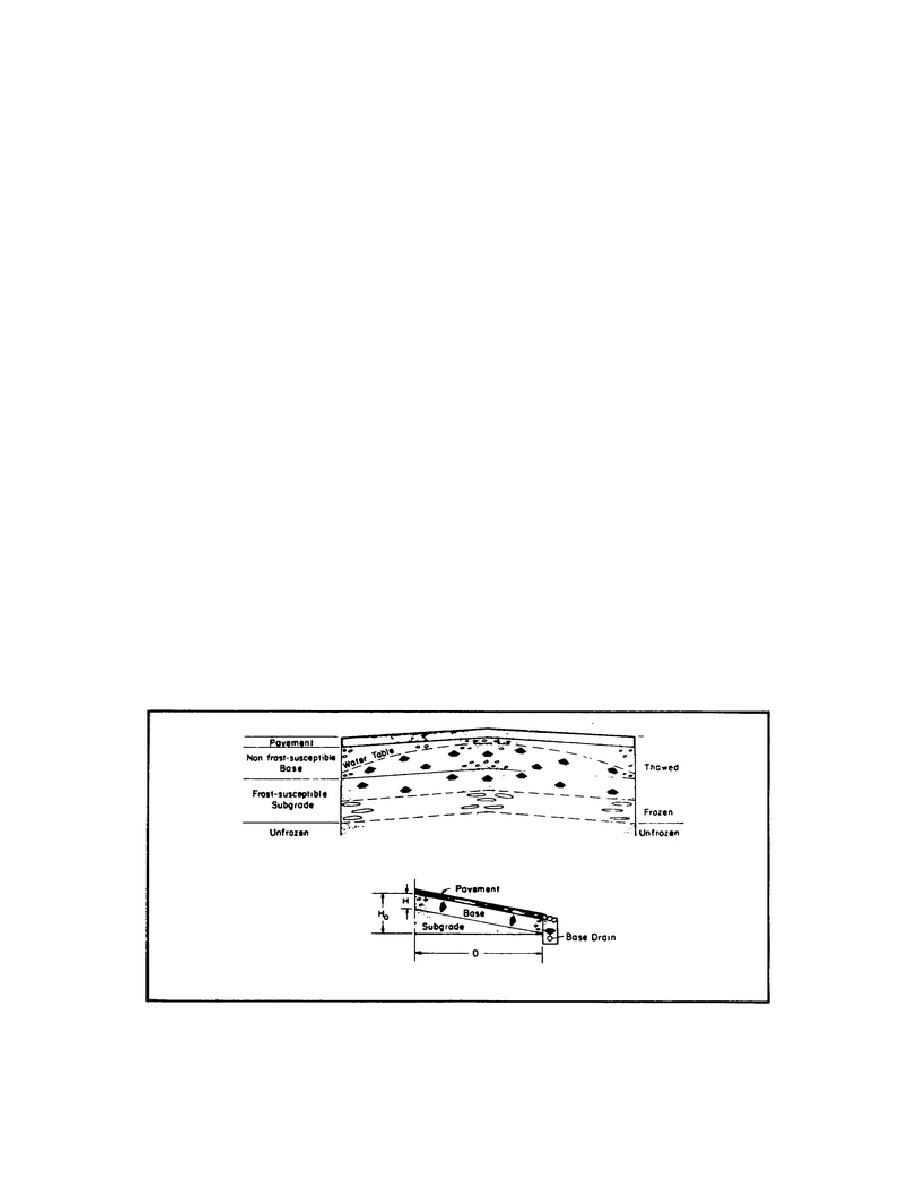
Lesson 3/Learning Event 2
Learning Event 2
DETRIMENTAL EFFECT AND PREVENTION OF FROST ACTION
You will need to recognize the visible effects of frost action and their causes in order to analyze what
actions to take to correct these detrimental effects.
Heaving
Frost heave is indicated by the rising of the pavement. It is visible evidence that ice lenses have formed
in the subgrade, in base materials, or in both. Uniform heave is the raising of adjacent areas of
pavement surface by approximately equal amounts. This is associated with a fairly uniform stripping or
fill depth, uniform ground water depth or horizontally uniform soil characteristics. Non-uniform heave
may occur where subgrades vary between frost susceptible and non-frost susceptible soils, at abrupt
transitions from cut to fill, or where excavations cut into water bearing strata. They may also occur
where utility cuts have been placed through the pavement. When interruptions in pavement uniformity
cannot be avoided, the best design solution is to use sufficient thickness of non-frost susceptible base to
prevent frost heaving.
Thawing and Reduction in Pavement Support Capacity
In areas where ice segregation occurs, the load-supporting capacity of the pavement decreases during
frost melting periods (especially in early spring). The melting of ice from the surface cannot drain
through the still frozen soil below. Excess moisture from the wet and softened subgrade soil moves
upward into the base course and then laterally to the nearest drain (Figure 20). If drainage is inadequate,
the base course becomes saturated and its bearing capacity is substantially reduced. If there is
subsequent frost action, there is accelerated deterioration.
FIGURE 20. MOISTURE MOVEMENT UPWARD INTO BASE COURSE DURING THAW
63



 Previous Page
Previous Page
